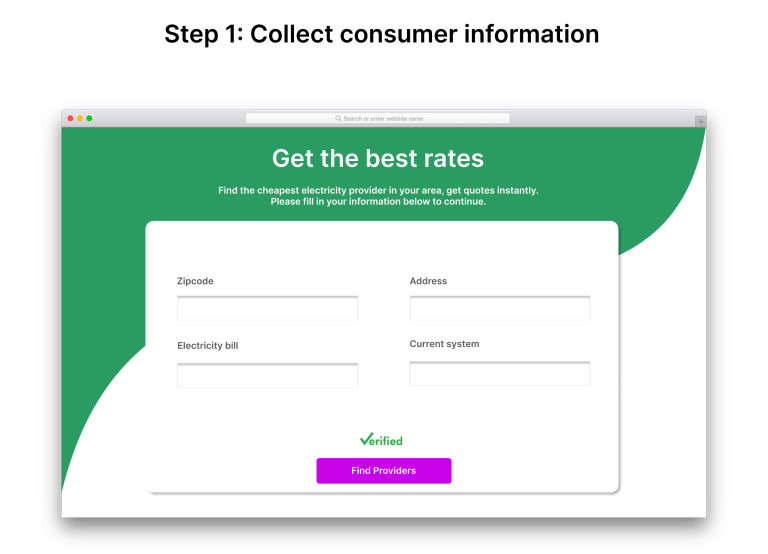Brand Explicit Consent
The future of consumer-brand communication is here! FCC's new regulations demand express explicit consent from consumers.
Introducing Brand Explicit Consent, so publishers and advertisers can comply with the new regulations. The solution allows consumers to give individual consent to your brand. We support multiple scenarios of consent capture.
Introducing Brand Explicit Consent, so publishers and advertisers can comply with the new regulations. The solution allows consumers to give individual consent to your brand. We support multiple scenarios of consent capture.
The implementation deadline by the FCC is Jan 2025, and for Medicare & Open Enrollment it is Oct 15. Read more about the ruling in our blog article or in the official FCC ruling.
What is Brand Explicit Consent?
Currently, advertisers are able to buy leads from various pages, such as comparison sites, without needing explicit consent from the consumer to be contacted by them. Brand Explicit Consent extends the current 'Ping Post' method, ensuring that consumers can give individual consent to specific advertisers, before the advertisers receive the lead.
Where is Brand Explicit Consent relevant?
Brand Explicit Consent is relevant for lead forms and comparison sites using real-time bidding actions.
There are several scenarios where Brand Explicit Consent can be implemented, that fit nicely into current pages and user flows. We've defined 3 below, but other scenarios are possible, and are considered in the implementation.
There are three likely scenarios that Brand Explicit Consent will support. Please see the examples below to get a better idea.
There are several scenarios where Brand Explicit Consent can be implemented, that fit nicely into current pages and user flows. We've defined 3 below, but other scenarios are possible, and are considered in the implementation.
There are three likely scenarios that Brand Explicit Consent will support. Please see the examples below to get a better idea.
Scenario 1
Select single brand, disclose in TCPA
In this scenario, the consumer is matched with the single highest bidder. The consumer is presented a single TCPA where the brand is disclosed. This can also be a custom TCPA provided by the brand.
In this scenario, the consumer is matched with the single highest bidder. The consumer is presented a single TCPA where the brand is disclosed. This can also be a custom TCPA provided by the brand.




Scenario 2
Display and select multiple brands
In this scenario, the consumer is matched with multiple highest bidders. The user can select these brands one by one, giving explicit consent.
In this scenario, the consumer is matched with multiple highest bidders. The user can select these brands one by one, giving explicit consent.




Scenario 3
Display and select multiple brands, one per page
In this scenario, the consumer is matched with multiple highest bidders. The consumer can select these brands one by one, on different pages, giving explicit consent.
In this scenario, the consumer is matched with multiple highest bidders. The consumer can select these brands one by one, on different pages, giving explicit consent.





How to tackle advertiser identification
How do you ensure partners are not listed multiple times, under different names? There are several approaches and suggestions for this, which will likely require a registry. For example, company names from dnb.com can be used as unified company identifiers.
Validation of presented advertisers or partners
Once a lead is sold, how can the receiver of the lead validate that the consumer can gave the appropriate consent? This is where partners like Jornaya by Verisk play a crucial role. By recording the consent and requiring publishers to record this value independently, the consent can be validated independently of the lead posting.
Closing words
The FCC’s regulatory changes will have a major impact on how the customer acquisition industry operates; there is still ample time to adjust, and it will give way to novel methods of matching consumers with brands in meaningful ways.
PX provides several solutions to this, and as always, these will be easy and straightforward to integrate, with personalized support where needed.
If you’d like to further explore how your business can thrive during this transition and after these changes, reach out to brandconsent@px.com